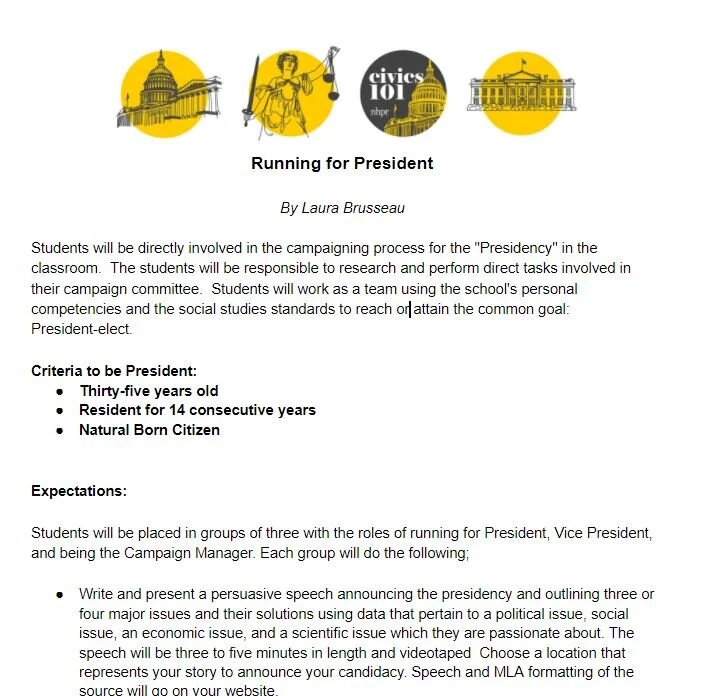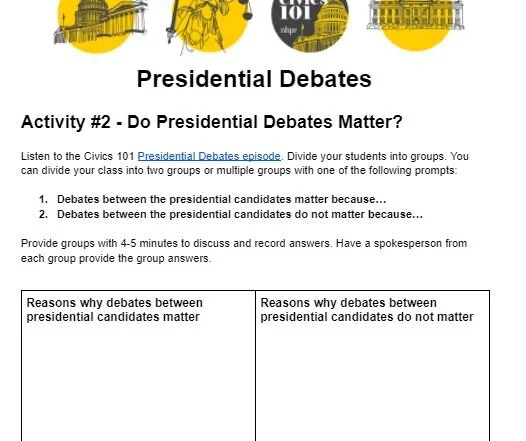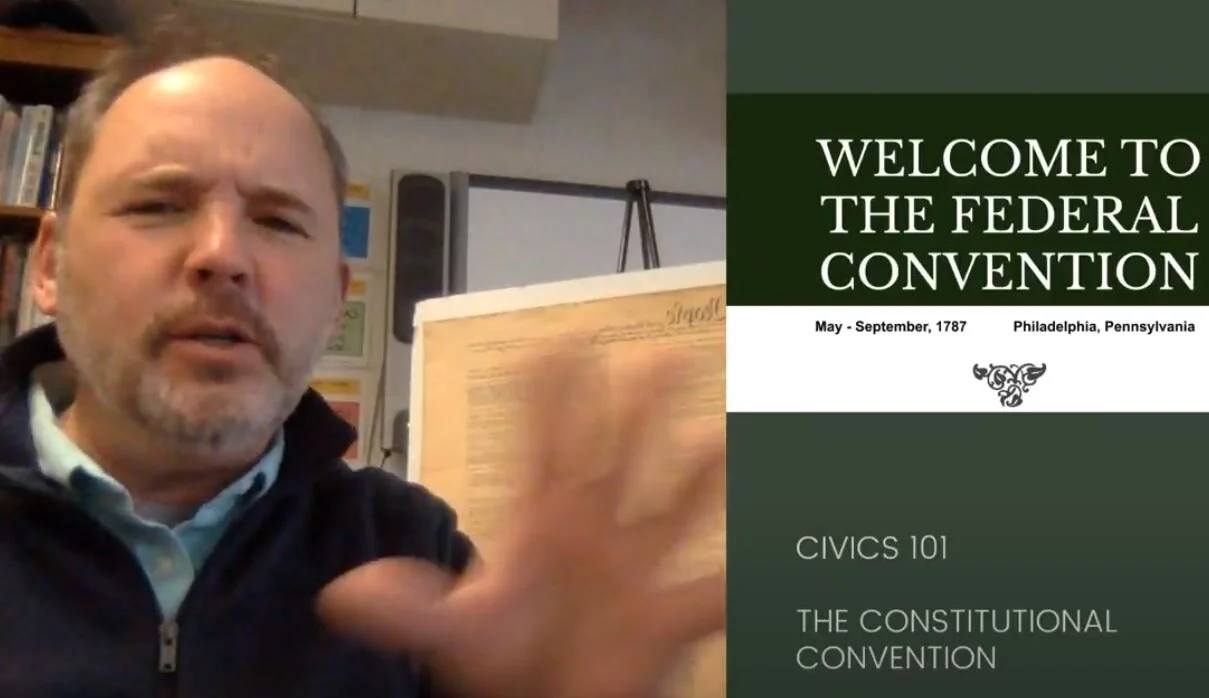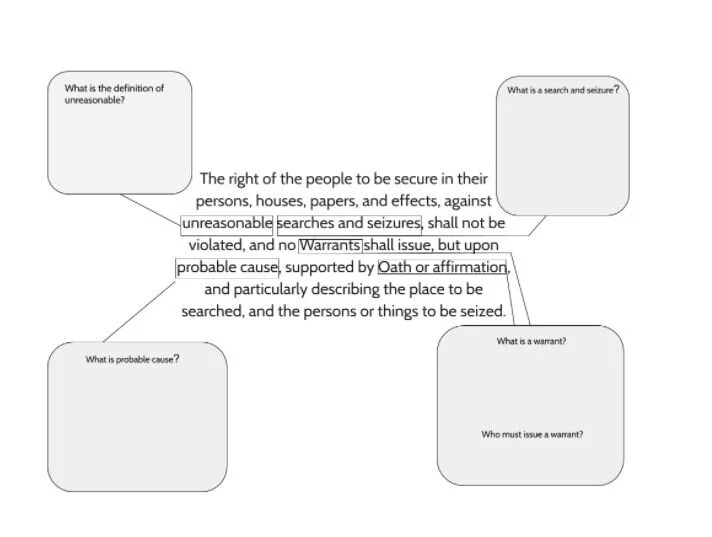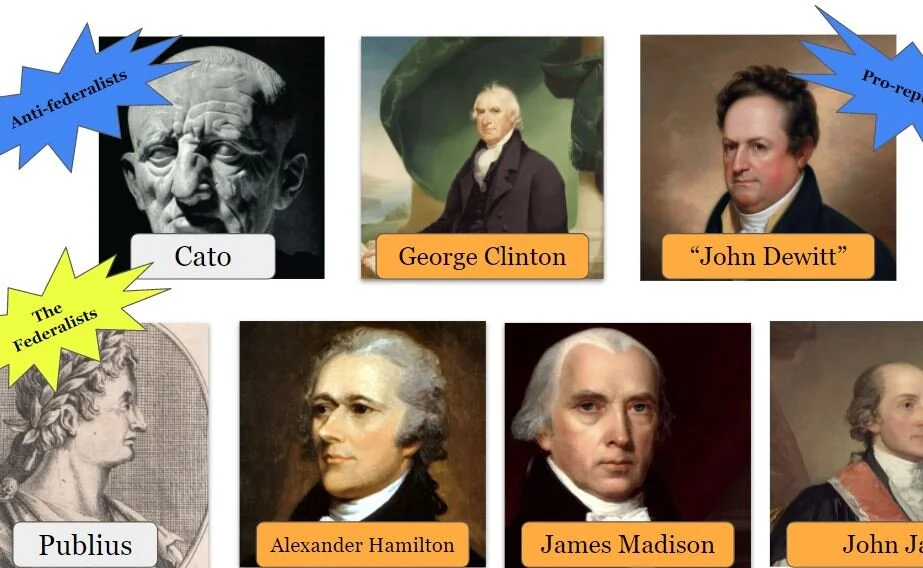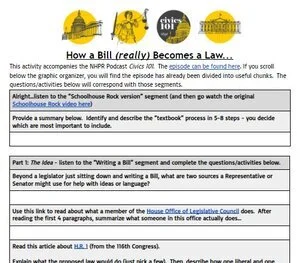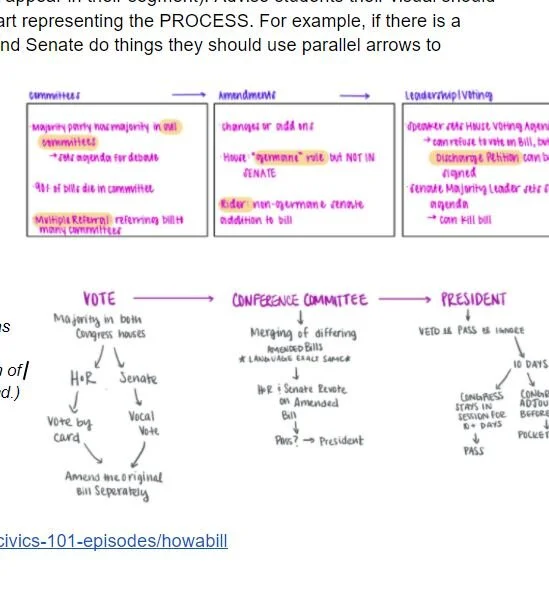Learn at Home with Civics 101
Check out this short video about our podcast.
Hello, teachers, parents, caregivers, and students! We have tons of great audio, activities, resources, and lessons to help you stay engaged (or reengage) with civics during this challenging time. All free.
Starting in 2021, we are releasing teacher-created Lesson Plans from our colleagues in The Cabinet. These all copy to your own Google Docs account so you can edit as you see fit.
We’re here if you need support or have questions. Email us at civics101@nhpr.org
Teacher Created Lesson Plans
Laura Brusseau has scripted this immersive activity to understand the process of running for office. It’s paired with our How to Run for President episode. In this activity, students in groups of three take on the role of presidential candidate, VP candidate, and campaign manager. Write your announcement speech, plan a 30 second commercial, choose your Secret Service name, and so much more!
Activity: Running for President
Grades: 8-12
Ryan Werenka has created not one, but four mini-activities about debates to pair with our Debates episode. Students will explore their purpose and whether they ‘matter’, build their own debate, and conclude with a writing prompt.
Activity: Presidential Debates
Grades: 8-12
To pair with our Founding Documents: The Constitution episode, Chuck Taft has created a convention-themed roleplaying activity based on primary sources. He has also made this wonderful video explaining the lesson plan! Click here for the full lesson plan, about which Chuck writes:
In this activity, students take on the roles of fictional (yet historic) delegates at the Constitutional Convention in 1787. Students learn about the background of the Convention and analyze primary source statements from James Madison’s notes. In small conventions, students debate the major issues that the Framers faced and find out how compromise was essential in creating the supreme law of the land.
Grade: 6-12
Activity: The Miracle in Philadelphia
This lesson from Shaunie Decker examines how Native Americans have been represented and treated during the formation of American government. It also explores the importance of including all voices in history. Finally, this lesson explains the purpose of land acknowledgments and allows students to take action by writing land acknowledgements that can be used in class. This may be delivered as a 3-day, comprehensive lesson, or the daily lessons may be used individually.
Jason Stern has created this activity to pair with our episode on how the government plays a role in the American school system. It has been designed in Nearpod, but there is a downloadable PDF for non-Nearpod users. It contains polls, audio clips, and quizzes.
Activity: Life Stages: School
Grades: 5-8
Andrew Swan has created this plan specifically for use with flipgrid, but can be used with other methods.
This activity asks students to weigh in on the myriad cases explored in our two Freedom of Speech episodes IRL1 and IRL2 (Freedom of Speech in Schools, Freedom of Speech regarding the flag and the pledge) and record their responses via video.
Grade: 6-12
Activity: IRL1 and IRL2
Taylor McDaniel has created this plan on the 4th Amendment. It pairs with our episodes Mapp v Ohio and New Jersey v TLO.
Activity: 4th Amendment
Grades: 8-12
It contains a close read of the words of the Amendment, a 4-corners activity, and six hypothetical scenarios.
Linnet Early has created this lesson plan for middle schoolers on the basics of the Electoral College.
Activity: Learning the Electoral College
Length: Three 50-minute periods
Grades: 6-8
Media: Podcast, video, essay
Neal Walter Young has created this thorough, massive, entertaining simulation. Through this activity, students will grapple with the positives and negatives of the Electoral College as well as ways in which it could be reformed. This activity begins with a brief history of the Electoral College and then is followed by a simulation in which students play the role of Pennsylvanian electors during a chaotic presidential election.
Cary Waxler has created this delightful simulation to pair with our episode on Conventions.
Students will conduct a simulated National Nominating Convention, held in Des Moines, IA, where no candidate has secured enough delegates in primary elections to be the automatic nominee. The simulated party name is the Unionist Party.
Jonathan Peralto has created this plan to pair with our Federalist/Anti-Federalist Papers episode. Students will understand the differences between the Federalists and Anti-Federalists in their debate over ratification of the U.S. Constitution and how that debate ultimately led to the creation and ratification of the Bill of Rights. This lesson is designed to be done over the course of two class periods, ranging from 45-60 minutes. If you are on a block schedule with longer classes, you could complete this in a single session. Time stamps were taken from the recording posted here.
David Olson has written a wonderful lesson plan on How a Bill (really) Becomes a Law. Students will listen to short chunks of the episode, then examine a House Resolution from the 116th Congress and follow its path through legislation. Students will learn about committees, lobbying, filibuster, and presidential actions.
Stephen Riner has created a three part media-based lesson about exploring the differences between the House and the Senate. Students will present their findings in a 1-3 minute video.
Rebecca Weiss has designed a lesson plan for one 80 minute class at the AP level. In it students will identify the main steps in the process of creating and passing legislation.

